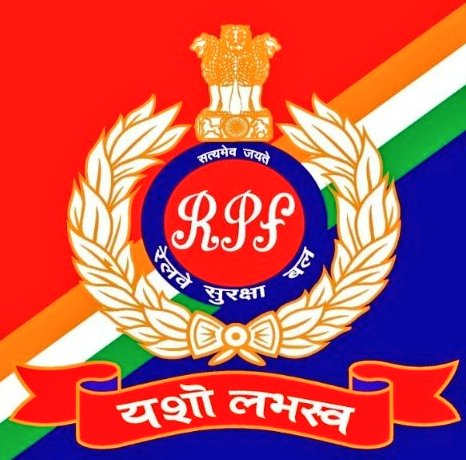Indian Railways Reimagined: The RPF’s Digital Leap in Public Engagement
Harnessing Social Media as a Tool to Foster Security, Inclusivity, and Public Awareness
By Sumati Shandilya, IG/PCSC/RPSF/New Delhi
“The function of law enforcement is not just to maintain order but to create the conditions under which all citizens feel protected, empowered, and included in the societal fabric.” –James Q. Wilson
In the digital era, #socialmedia has transcended its original purpose as a communication tool to become a powerful driver of social change, participatory governance, and public accountability. For the Railway Protection Force (#RPF), responsible for the safety of over 20 million daily passengers across the vast Indian Railways network, social media represents a platform of great strategic value.
Forums such as Twitter (X), Facebook, Instagram, and YouTube are leveraged not only to communicate but also to build trust, foster inclusivity, and amplify awareness campaigns. This sophisticated integration of digital engagement aligns with theories of participatory communication, public sociology, and digital citizenship, establishing the RPF as a forward-thinking law enforcement agency in the global context.
Social Media: A New Frontier for Public Engagement
Social media platforms like #Twitter (X), #Facebook, #Instagram, and #YouTube have revolutionized communication by offering instantaneous and interactive interfaces.
For law enforcement, these platforms enable:
- Real-Time Information Sharing: Quick dissemination of safety alerts, updates on services offered by RPF to the passengers, and guidelines during emergencies.
- Interactive Public Engagement: Direct interaction with passengers for queries, grievances, and feedback.
- Crowdsourcing Intelligence: Leveraging user-reported information for monitoring suspicious activities.
Bridging the Gap: From Authority to Accessibility
Social media has redefined the traditional dynamic between law enforcement and the public by enabling real-time, two-way communication. For the RPF, this interactive digital interface acts as a bridge, narrowing the psychological and operational gap between citizens and authorities. Verified handles on platforms like Twitter and Facebook provide passengers with an asynchronous communication channel to report grievances, seek assistance, and receive critical updates, enhancing both accountability and operational transparency.
This approach is rooted in Habermas’s Public Sphere Theory, which conceptualizes social media as a modern public sphere where individuals can engage with institutions and contribute to discourses shaping their lived realities. By prioritizing responsiveness and accessibility, the RPF reinforces its legitimacy as a citizen-centric service-oriented organization, shifting the public perception of law enforcement from that of distant authority to collaborative ally.
For vulnerable groups, particularly women and children, this digital accessibility represents a lifeline. The RPF’s ability to respond swiftly to distress signals posted on social media, combined with its proactive outreach, demonstrates the application of proactive policing frameworks within a digital ecosystem. The immediacy of these responses builds trust and positions the RPF as a dependable institution safeguarding mass public transport network.
Amplifying Awareness: Campaigns That Resonate
Social media’s network effect empowers the #RPF to amplify its awareness campaigns, reaching millions across urban, peri-urban, and rural demographics. Initiatives like Operation #MeriSaheli (for security of women traveling alone in long distance trains), Operation #AAHT (Action Against Human Trafficking), and anti-trespassing drives leverage digital platforms to educate passengers, promote vigilance, and encourage participatory safety practices.
Operation Meri Saheli, for example, benefits from emotive storytelling, where the RPF shares real-life accounts of women passengers receiving timely assistance. These narratives, supported by compelling visuals and infographics, employ the Narrative Transportation Theory, which avers that audiences are more likely to engage with and act upon emotionally resonant stories. Similarly, Operation AAHT uses behavioural design principles to educate the public on recognizing signs of trafficking and reporting suspicious activities, transforming passive audiences into active participants in combating transnational crimes.
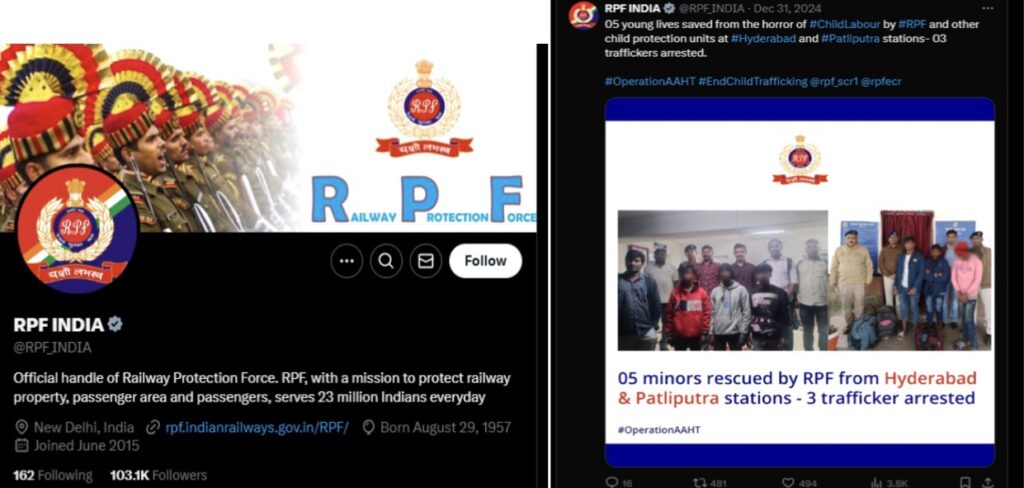
By tailoring content using algorithmic targeting, the RPF ensures that its messages reach the intended audiences, maximizing impact. This strategy aligns with Lasswell’s Communication Model, emphasizing the importance of addressing the “who,” “what,” “how,” and “to whom” in communication efforts. Through platform-specific strategies, the RPF achieves not only visibility but also meaningful engagement.
Humanising the Force: Social Media as a Sociological Catalyst
One of the most profound impacts of social media is its ability to humanize institutions, bridging emotional gaps between organizations and the communities they serve. For the RPF, this capability transforms public perceptions of law enforcement from rigid authority to empathetic protectors. Posts celebrating women officers leading security operations or videos showcasing the rescue of trafficked children are not merely content—they are cultural artifacts that reinforce societal trust.
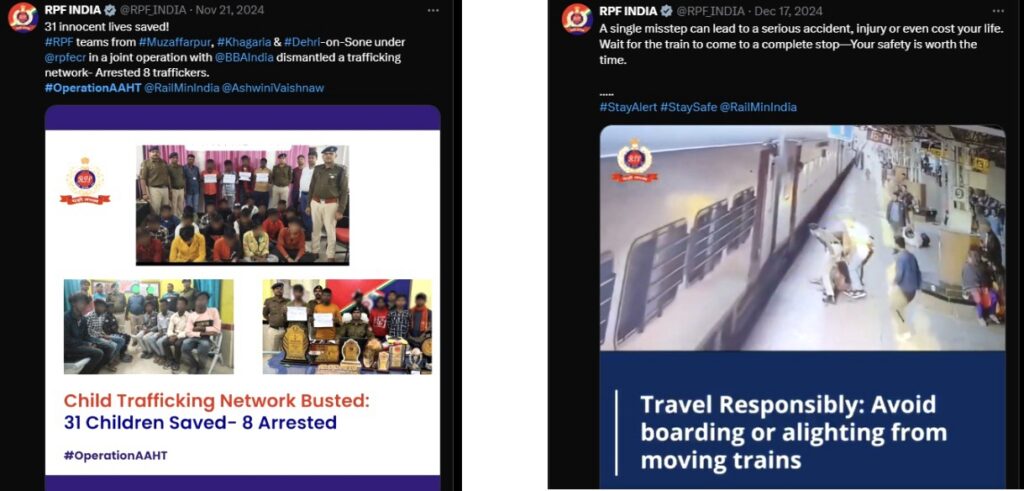
This aligns with Symbolic Interactionism, a sociological framework suggesting that meaning is constructed through shared symbols and interactions. By sharing moments of bravery, compassion, and dedication, the RPF not only reinforces its institutional values but also strengthens its relational equity with the public.
Behind-the-scenes glimpses into operations and personnel narratives further align with Authenticity Theory, creating a perception of transparency and accountability. Moreover, the RPF’s digital storytelling strategy helps build a resonant identity, fostering a deeper emotional connection with passengers. This connection extends to promoting gender inclusivity, as posts featuring women-led security teams challenge entrenched stereotypes and inspire broader societal shifts in perceptions of women in law enforcement.
Leveraging Social Media as a Crime Prevention Ecosystem
Social media is not just a platform for communication but also an integral part of the RPF’s crime prevention architecture. The force uses social media to share live updates on potential threats, train disruptions, and safety advisories, ensuring passengers have access to real-time situational awareness. These updates align with the Time-Sensitive Communication Paradigm, prioritizing timely dissemination of critical information to mitigate risks effectively.
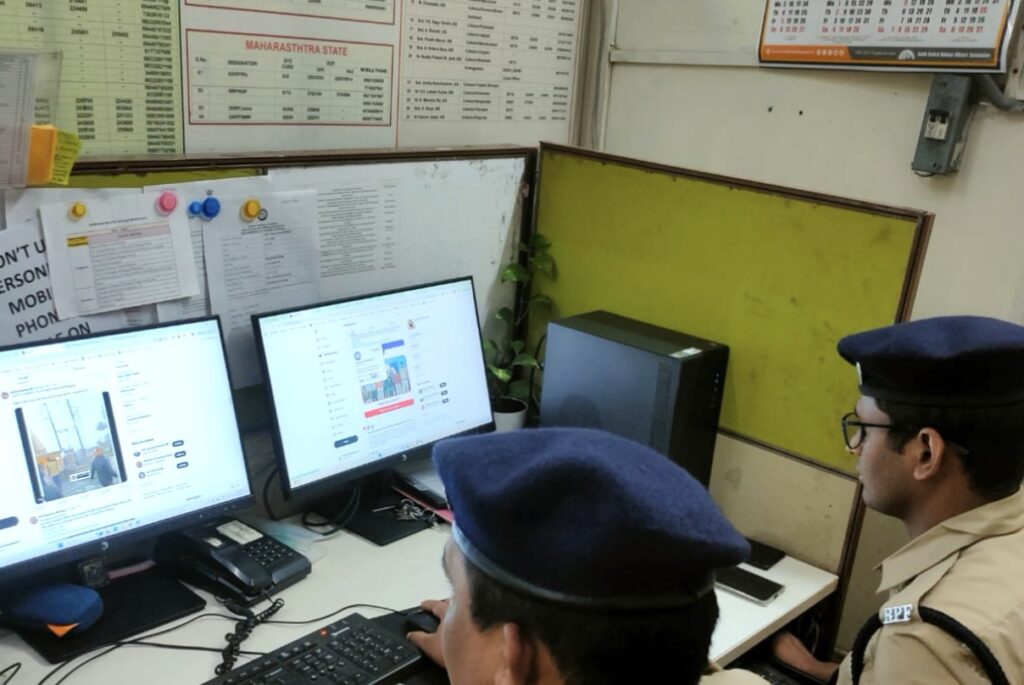
In addition to broadcasting updates, the RPF actively employs social media intelligence tools to monitor digital conversations for distress signals, suspicious activities, and emergent security concerns. By analysing hashtags, geotags, and user-generated content, the RPF incorporates predictive analytics into its operational framework. This approach aligns with Predictive Policing Models, enabling the force to pre-emptively address threats and allocate resources efficiently.
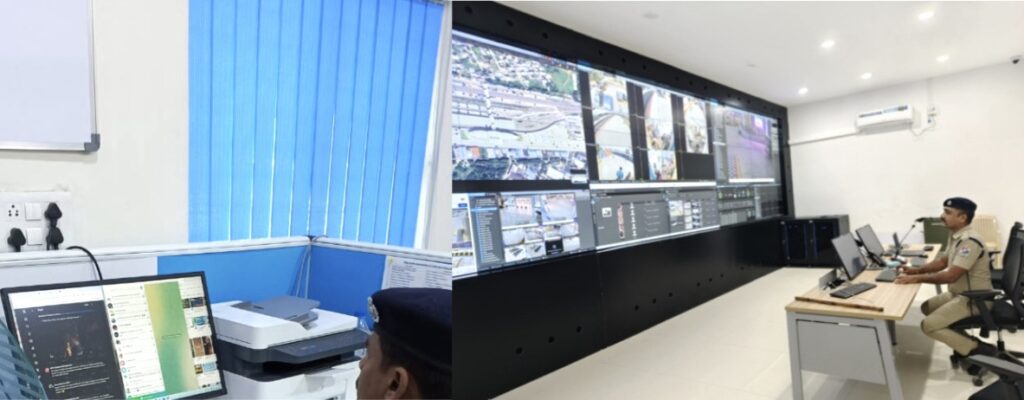
For instance, during large-scale events or emergencies, the RPF uses Twitter as a crowdsourced intelligence platform, allowing passengers to share on-ground observations. This participatory approach exemplifies Community Policing Theory, fostering a collaborative relationship between law enforcement and the public.
Digital Literacy and Bridging the Digital Divide
While social media enhances engagement, its effectiveness depends on the audience’s ability to navigate digital platforms. Recognizing this, the RPF’s strategy includes promoting digital literacy to ensure equitable access to information and services. Posts explaining the use of the RailMadad app, helpline numbers, and online grievance redressal systems are designed to bridge the digital divide, ensuring that passengers across all socio-economic strata can benefit from the RPF’s initiatives.

This effort aligns with Rogers’ Diffusion of Innovations Theory, which emphasizes the role of communication channels in the adoption of new technologies and practices. By producing multilingual content and simplifying complex processes, the RPF addresses disparities in digital accessibility, fostering inclusivity.
Celebrating Milestones: Building Social Capital
Social media provides the RPF with a platform to celebrate achievements, from rescuing trafficking victims to apprehending criminals and executing high-impact campaigns. These celebrations not only enhance institutional morale but also build social capital, reinforcing public trust in the force’s capabilities.

By highlighting milestones, the RPF employs the Self-Determination Theory, which underscores the importance of recognition in fostering intrinsic motivation. Public acknowledgment of these successes reassures passengers of their safety and inspires confidence in the RPF’s operational excellence.
Strengthening Gender Representation: Digital Narratives of Inclusivity
The RPF’s commitment to gender inclusivity finds robust representation on its social media platforms. Posts spotlighting the leadership of women officers and members of the force or the achievements of all women teams like Shakti or Rudramma or Veerangana or JOYMATI BAHINI challenge traditional gender norms and inspire young women to pursue careers in law enforcement.
This strategy aligns with Transformational Leadership Theory, emphasizing empowerment, vision, and collaboration. By promoting women’s achievements, the RPF not only enhances its operational framework but also fosters societal progress toward gender parity.
Challenges in Using Social Media for RPF
- Misinformation and Fake News: Rumors and unverified information can escalate panic. While handling social media handles, we should be careful to share accurate and verified information.
- Digital Literacy: Many passengers, especially in rural areas, lack access or understanding of social media. As discussed above, focused campaigns may be launched for enhancing digital literacy of citizens.
- Resource Constraints: Monitoring social media 24/7 requires dedicated teams and advanced tools.
- Ethical and Privacy Concerns: Balancing surveillance and citizen privacy remains a critical challenge.
Mitigation Strategies
- Deploying verified accounts with proactive monitoring.
- Collaborating with social media platforms to flag and counter misinformation.
Ethical Considerations in Social Media Use
RPF officers must adhere to ethical standards, ensuring transparency, accountability, and respect for privacy. Misuse of passenger data or invasive surveillance practices can erode trust.
Future Vision: Expanding Digital Engagement
The RPF’s forward-looking approach to social media envisions leveraging emerging technologies to enhance engagement further. Key initiatives include:
- AI-Driven Insights: Using machine learning to analyze audience behavior and optimize content for maximum impact.
- Immersive Storytelling: Leveraging augmented reality (AR) and virtual reality (VR) for interactive safety tutorials.
- Regional Content Customization: Expanding vernacular content to increase inclusivity and reach.
- Influencer Collaborations: Partnering with digital influencers to amplify safety messages to younger demographics.
These innovations align with Technological Determinism, suggesting that advancements in technology drive social change by shaping behaviours and interactions.
A Digital Legacy of Trust and Transformation
Social media, when harnessed effectively, becomes a force multiplier for law enforcement, amplifying impact and fostering inclusivity. For the RPF, it has redefined public engagement, blending operational excellence with empathetic communication. By leveraging social media, the RPF ensures not only immediate safety but also long-term societal transformation.
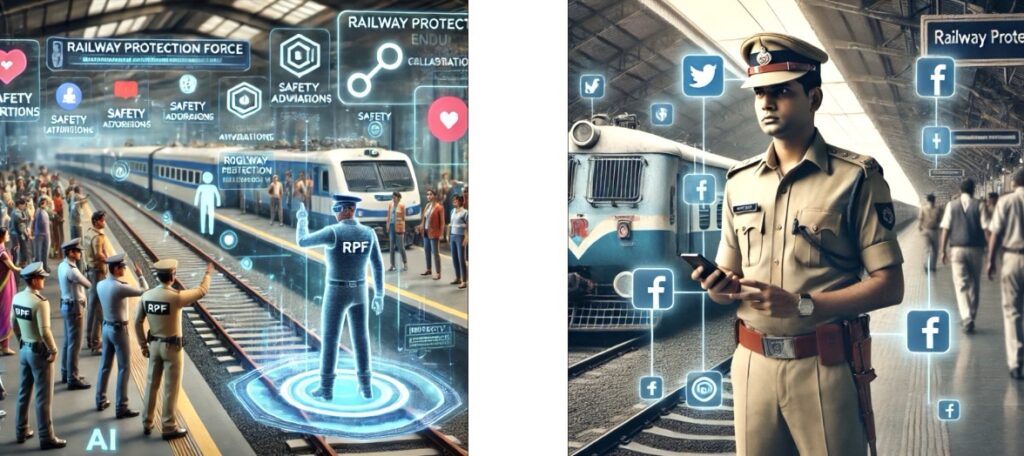
As James Q. Wilson observed, “The legitimacy of a law enforcement agency is derived from the trust and confidence of the people it serves.” Through its innovative use of digital platforms, the RPF exemplifies this ethos, transforming #IndianRailways into a symbol of #safety, #empowerment, and #progress. The journey toward a secure and inclusive future is not just a goal; it is a legacy in the making—crafted tweet by tweet, campaign by campaign, and connection by connection.
Connect us on-
- @RPF_INDIA on X
- RPF INDIA on facebook
- @rpf_india_official on Instagram, and
- @RailwayProtectionForce_India (RAILWAY PROTECTION FORCE- OFFICIAL) on YouTube.


